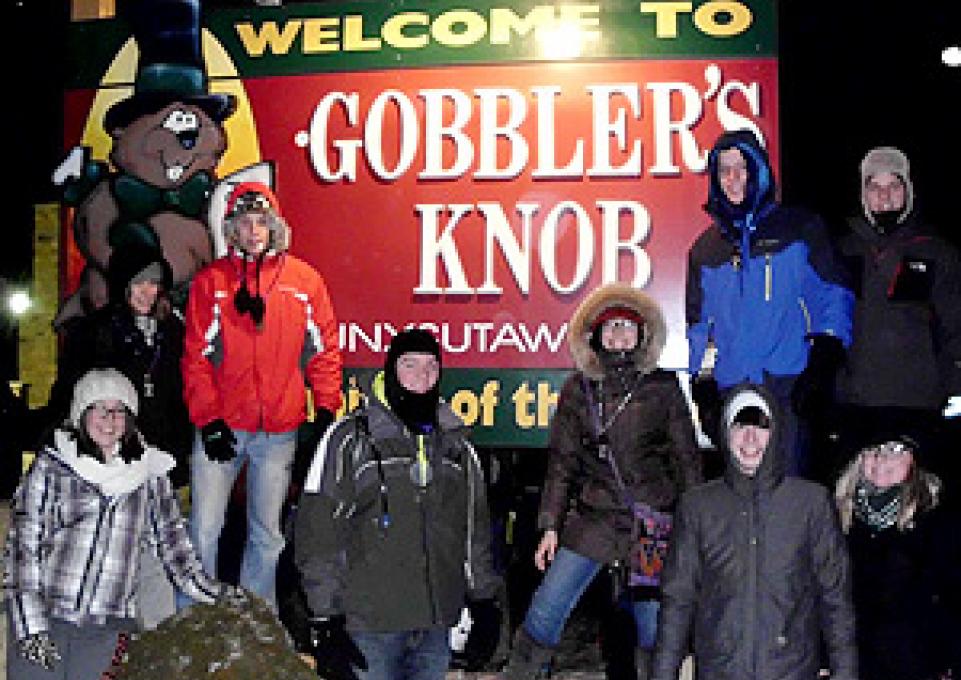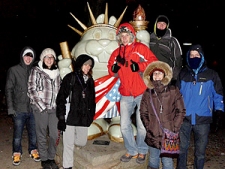
That’s the forecast according to Punxsutawney Phil, groundhog extraordinaire, who did not see his shadow when he came out of his cozy underground home at Gobbler’s Knob in Punxsutawney, Pennsylvania.
On hand to witness the historic event were seven Buffalo State students. Their trek was sponsored by Wilderness Adventures, a USG-sponsored organization. Climatologist Stephen Vermette, professor of geography and planning, accompanied the group.
“At zero degrees Fahrenheit, it was the coldest Groundhog Day I have ever experienced,” said Vermette. Reports estimated the crowd at 30,000—the second largest in the 127 years that the event has been held.
How did Groundhog Day start?
February 2 is Candlemas Day, a Christian holiday, but, like many such holidays, its roots are ancient. February 2 is also a “cross-quarter” day—in this case, the day that falls about halfway between the winter solstice in December and the spring equinox in March. For people relying on the sun for light and crops, these recurring events were important milestones for planting and harvesting.
So, how did a groundhog become involved?
Wikipedia cites an 1841 diary entry written by a Pennsylvania storekeeper, who wrote, “Last Tuesday, the 2nd, was Candlemas day, the day on which…the Groundhog peeps out of his winter quarters and if he sees his shadow he pops back for another six weeks nap, but if the day be cloudy he remains out, as the weather is to be moderate.”

Vermette observed that the record shows that Phil usually sees his shadow, indicating another six weeks of winter. Phil has not seen his shadow—and thus predicted an early spring—only 16 times of the 116 that have been recorded. It’s an annual event that we have fun with today, but according to Vermette, “Observing these cyclical events reminds us to pay attention to the world around us. It’s less obvious in our modern technological culture, but the fact is that we depend on the sun and the seasons just as much as our ancestors did.”
